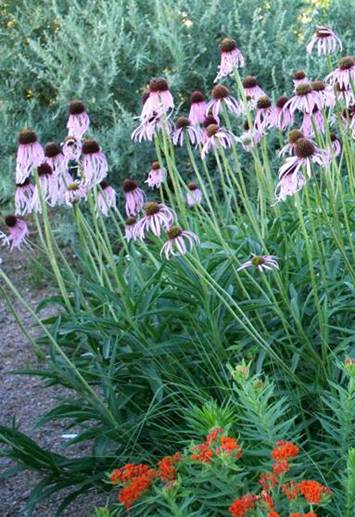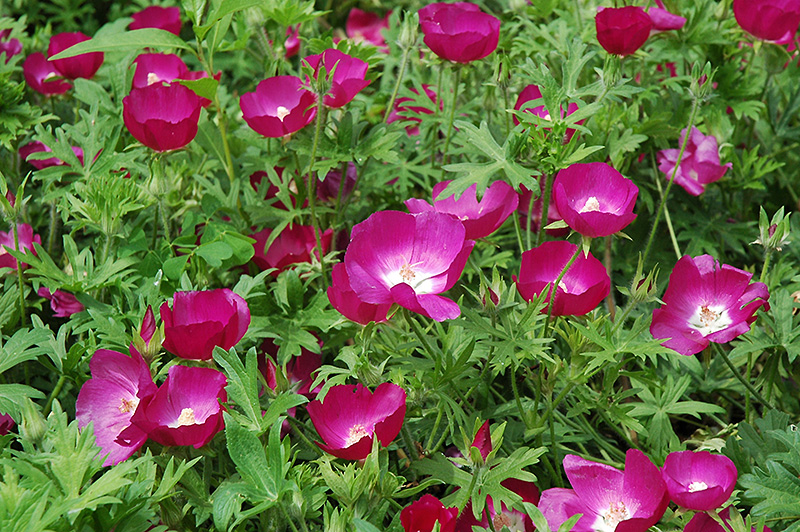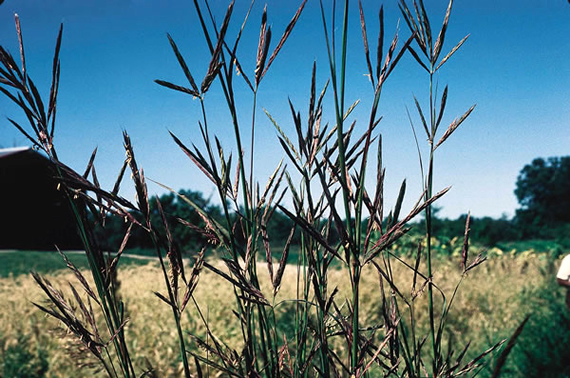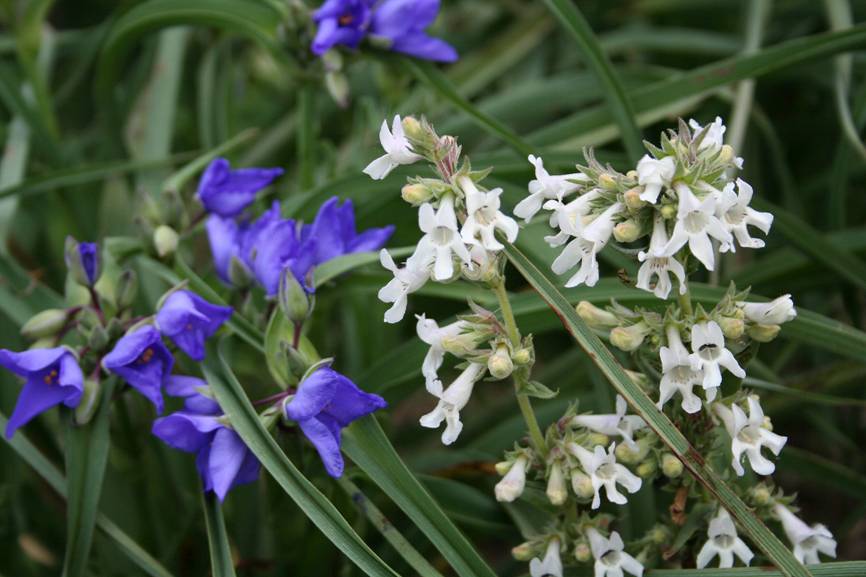Native, or regionally appropriate plants, can add much to the home garden and landscape. Natives are beautiful, enhance yard biodiversity and attract many birds, small wildlife and pollinators. They are also well adapted to life wherever you live, especially the variances in rainfall and temperature. This blog post highlights native plants for the Great Plains, but these principles can apply across regions.
Beauty and Variety
Many native flowering plants do equally well as garden plants and will add bright spots of color to your garden. Adapted to life on the prairie, these plants send down long roots to pull water from the soil, so they won’t require large amounts of water once they are established. Because they are natives, many insect pollinators instinctually seek these flowers out and help to spread pollen and seeds.
Because native plants all evolved in the same landscape, they start blooming in April as spring begins and continue through the hard frosts of autumn. The same plants do not bloom for six months in a row; rather, there is a procession of flowers throughout the growing season. Native grasses also do well in gardens and even as lawns, depending on the species. Grasses, such as big bluestem or switchgrass, do well in gardens, while buffalograss, a drought-tolerant prairie grass, does well as a turfgrass.
Some commonly grown species in the Great Plains include: pale purple and narrowleaf coneflowers, blanket flower and purple poppy mallow. Some fall blooming species include: goldenrod, wild bergamot and several aster species. A good place to start researching the best species for your area is at your local extension office or contacting your state arboretum.

Pale Purple Coneflower

Purple Poppy Mallow
Attracting Pollinators
Because native plants are just that, native, indigenous pollinators already recognize them as sources of nectar and pollen. Bees, butterflies, moths and other pollinators rely on native plants for much of their food source. Early spring or late fall blooming plants can make the difference between survival or not for some pollinators, so planting natives in your garden will provide benefits to more than just you. Some native plants attract specific species of insects, birds or other animals, so if you want to attract hummingbirds for example, read up on which plants they like.

Big Bluestem

Prairie Spiderwort and Pale Penstemon
Water Usage
Native plants also help with lawn and garden water conservation. Some are adapted to life in the high plains, where rainfall totals are well under 20 inches annually. These native plants need little additional water to stay alive and happy. Native prairie plants are also well adept at capturing surface and soil water, which lowers the amount of water that runs off your garden. The same holds true when you use native grasses in your lawn; as summer temperatures climb and rainfall slacks off to almost nothing, these grasses stay alive, pulling water from the soil with their deep root systems.
All in all, using native plants in your lawn and garden landscapes creates a beautiful canvas of colors and plant textures that are wildlife friendly and will withstand the ups and downs of weather.
For some good resources on getting started with native plants and gardens, check out:
- Bushes for Birds: What Flora Best Attracts Avifauna? by David Menough, Wild Birds Unlimited
- Bringing Nature Home: Using Native Plants to Sustain Wildlife in Our Gardens by Douglas W. Tallamy
- Audubon Rockies’ Habitat Hero program
- Nebraska Statewide Arboretum
~ Maggie Vinson, Former RMBO Nebraska Education Coordinator and Master’s Student in Horticulture at Oklahoma State University


